Designs have been approved for Carbon12, an 8 story building planned for N Williams Avenue. The designers of the project, PATH Architecture, expect that the 85′ tall structure will be the first tall building in the USA built using Cross-laminated Timber (CLT) as its structural system. The building will include 14 residential condominium units, as well as two ground floor retail units. With floorplates much skinnier than is typical in multifamily buildings Carbon12 will include only two residential units per floor. 22 parking spaces will be provided in a below grade mechanized parking system.
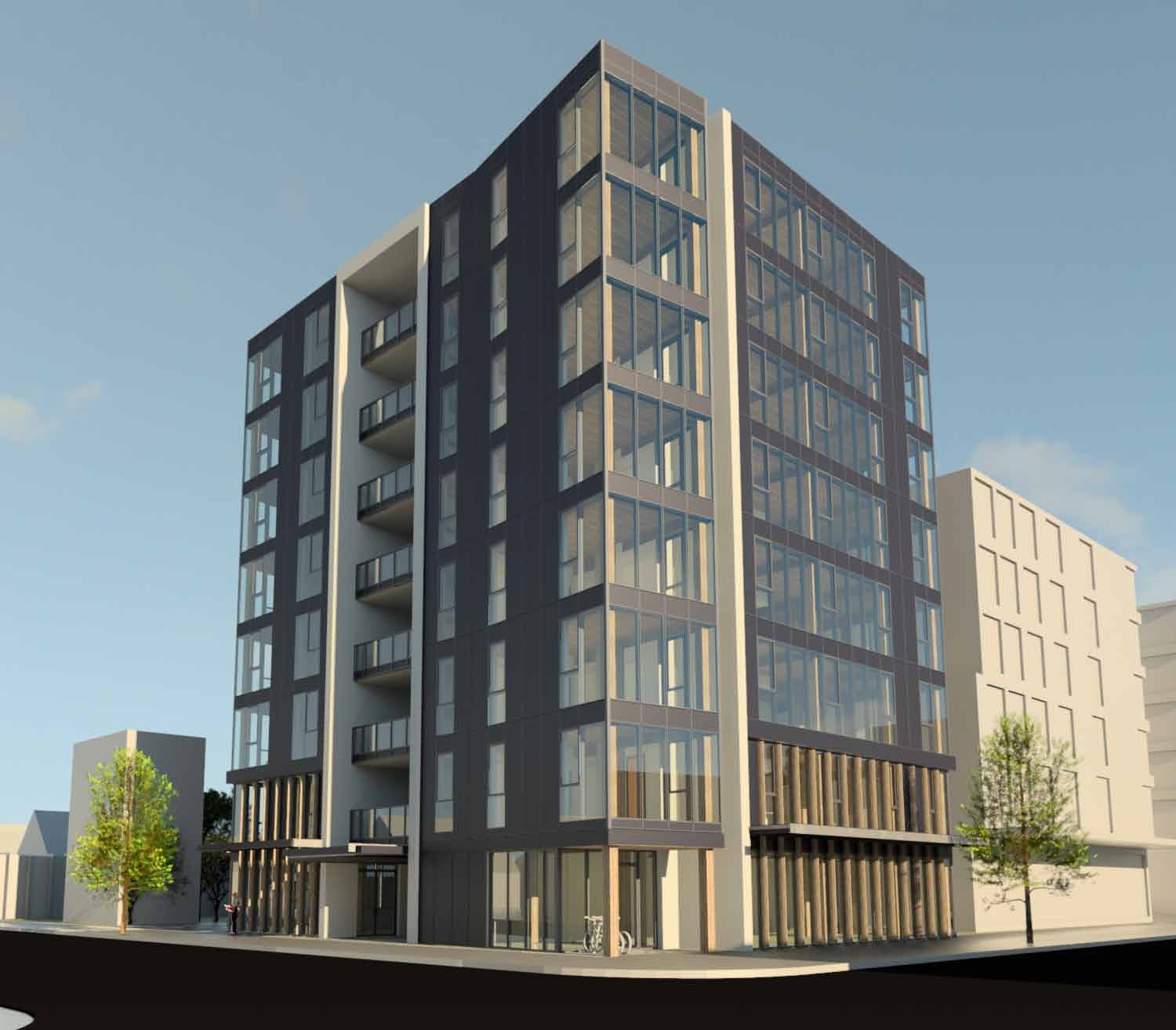
Carbon12 will be located at the corner of N Williams Ave and NE Fremont St, on a site that is currently vacant. In 2013 the site was rezoned at the request of the property owner from Multi-Dwelling Residential 1,000 (R1) to Central Residential (RX). The rezoning was initiated so that a project could be developed with ground floor commercial uses, which are prohibited in the R1 zone. As a condition of approval the City Council set a maximum height of 85′ for the corner of the site, stepping down to 65′ for most of the site and to 45′ adjacent to the R2 zoned properties. This is less than the 100′ height normally allowed in an RX zone, but more than the 65′ height allowed in the EX zone applied along most of N Williams Ave.
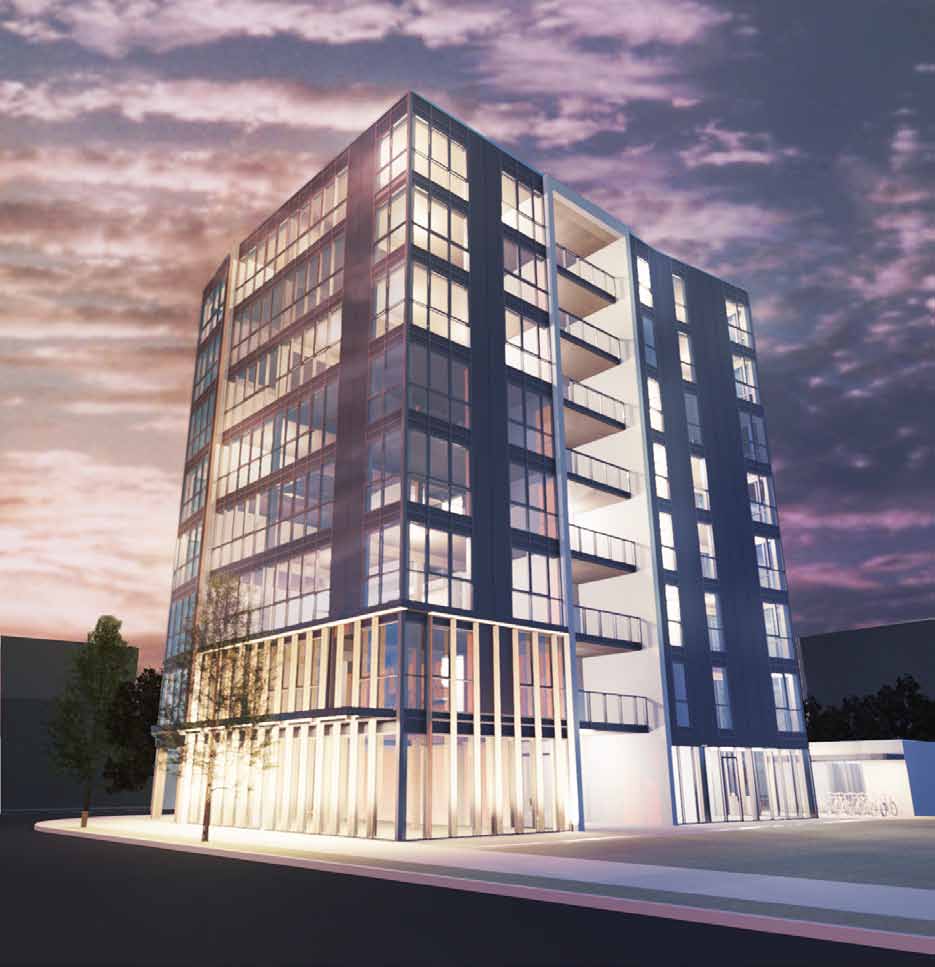
Building codes typically limit structures built using light wood framing to five or six stories, however Cross-laminated Timber construction allows for much taller buildings. The CLT panels are made by gluing together many smaller pieces into a larger assembly that has sometimes been described as “plywood on steroids”. As well as having much greater strength than wood members, heavy timber is also considered more fire resistant. Though still considered experimental in the USA the process has been used in Europe since in 1990s. A 10 story CLT structure was recently completed in London and an 18 story structure is under construction at the University of British Columbia in Vancouver. Late last year D.R. Johnson, an Oregon lumber mill, became the first mill in the USA certified as able produce CLT.
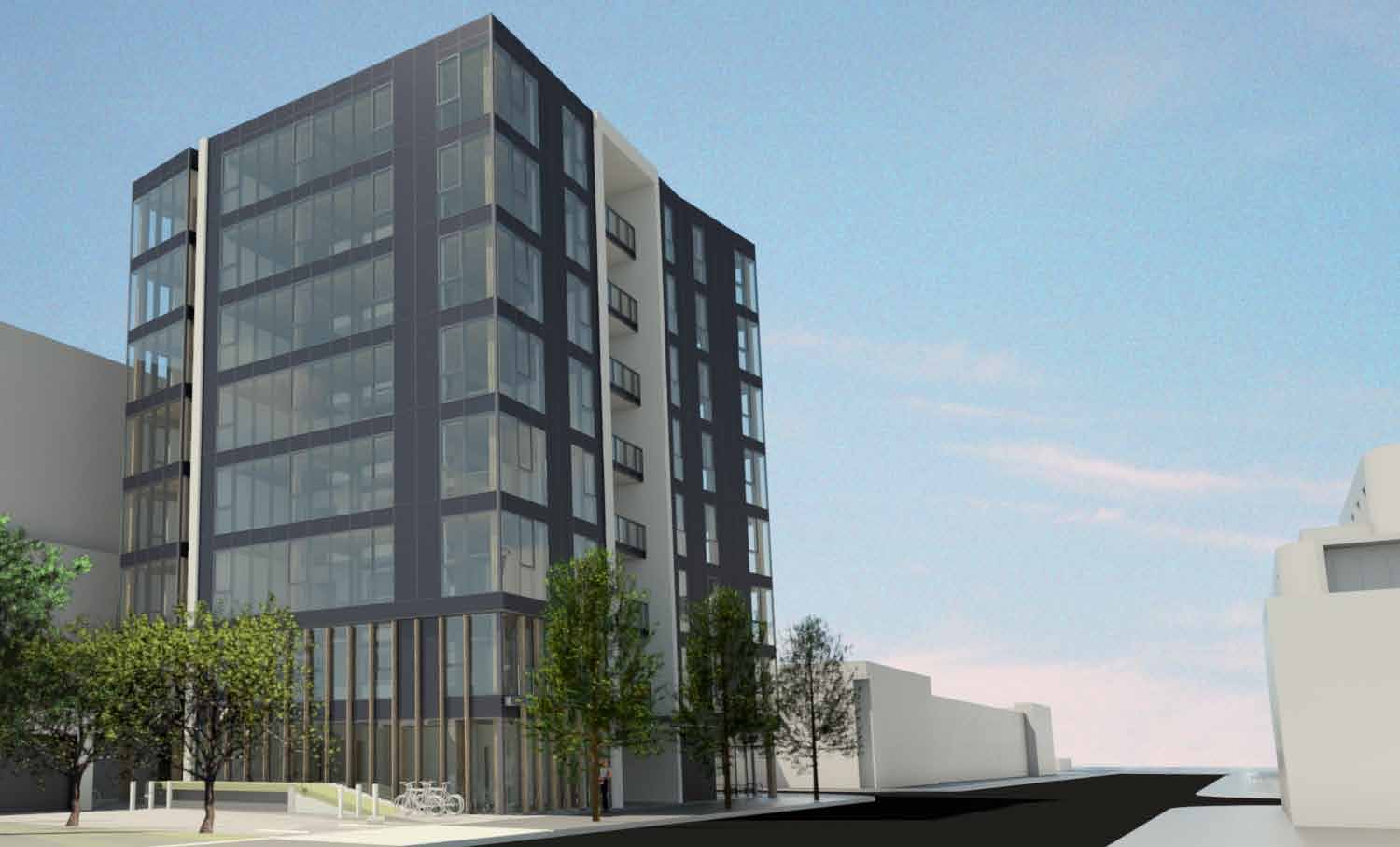
The primary exterior materials for the building will be a curtain wall glazing system and metal paneling. Stucco will be used around the inset balconies. Vertical wood fins will accentuate the lower floors where they face the street.
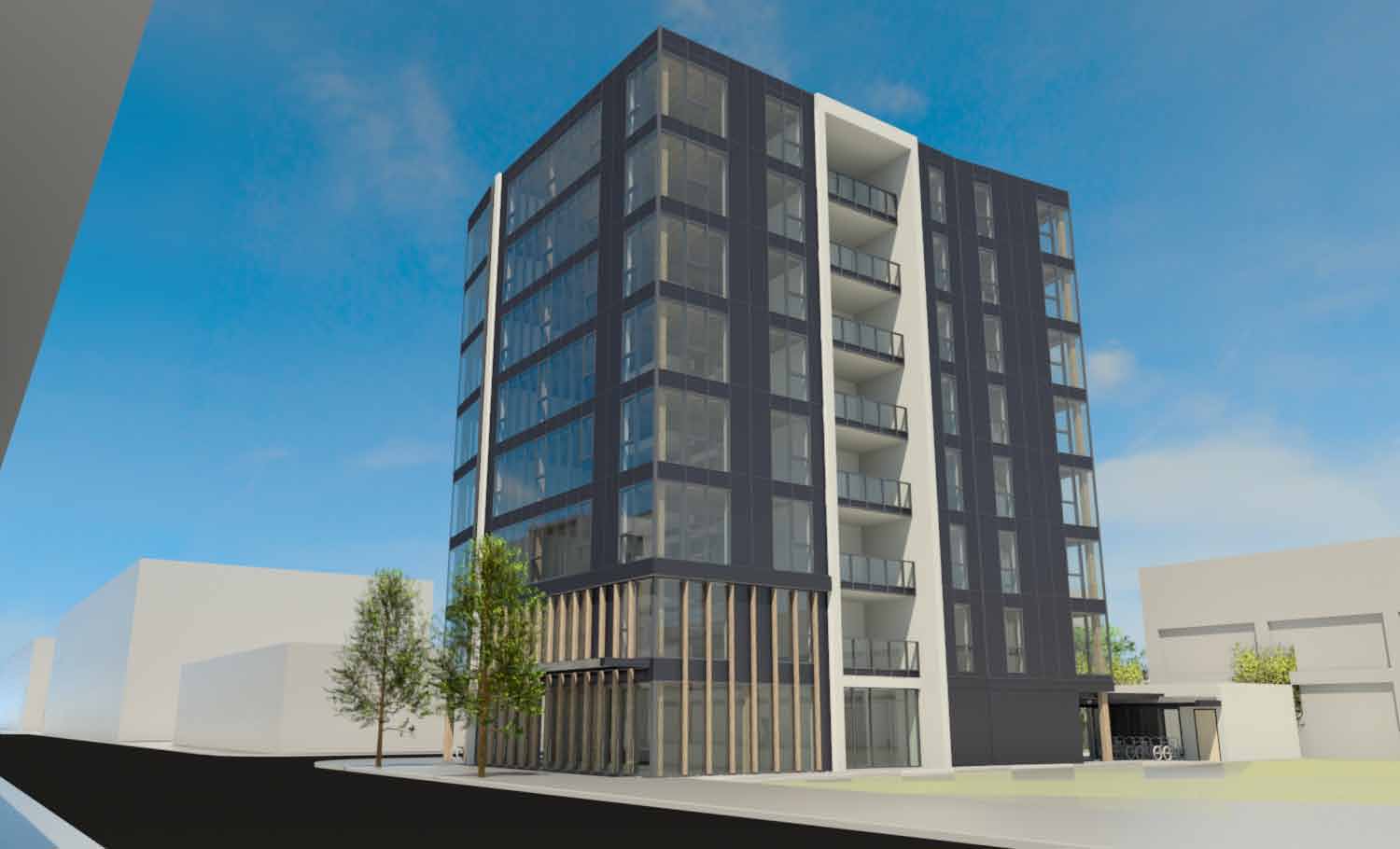
The project’s Design Review was approved through a Type II review, where the decision is made by Bureau of Development Services staff. In the Notice of Decision [PDF] it was noted that the structural system chosen allows for an architectural expression uncommon in wood framed buildings:
Architecturally, the building is modern in style expressing clean lines and simplicity. The materials were chosen to be distinctive and reflect some qualities of the nearby buildings…. The proposal’s wide timber structural bays allow for windows much broader than is typical in midrise commercial wood buildings. This allows for greater transparency and views of the interior wood beams, posts and ceiling from the exterior.
Building permits for Carbon12 are currently under review. Due to the pioneering nature of the project the structural and life safety reviews are being conducted by the State of Oregon Building Codes Division, rather than by the City of Portland who would usually perform the review. Construction is expected to begin later this year.
Plans, Elevations and Sections
- Plan – Site
- Plan – Basement
- Plan – Ground
- Plan – Second
- Plan – Typical
- Plan – Roof
- Elevations – North and East
- Elevations – South and West
- Sections – North / South
- Section – East/West
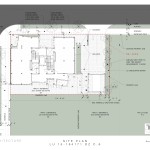
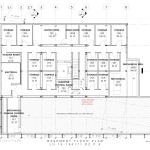
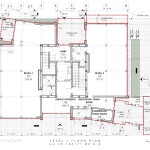
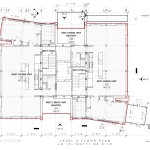
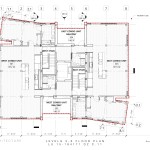
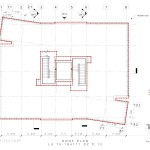
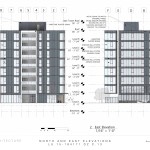
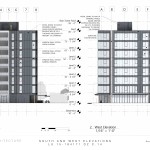
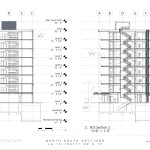
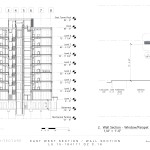
22 underground parking spaces for just 14 units??
Mechanized parking–so perhaps 11 stackers with two cars a piece or some combination of stackers and standard stalls–don’t know about the feasibility of sharing a stacker with another unit. My guess would be that they are all sold to the condo owners.
Perhaps the rest are for the first floor retail space tenants (?)
1400 sq ft per unit. possibly > $1M/unit. You can bet the future residents will be rich with > 1 car per unit.
The “Carbon” here refers to “High carbon footprint,” right? What with luxury units and over 1.5 cars per unit. That’s got to be about the highest ratio I’ve seen for a recent residential building in Portland.
People complain about not enough parking in most new units AND having enough parking in this case… you can’t satisfy everybody.
Is this not the corner that was designated to be a Kaiser Permanente Elder Co-Housing Community?? If so, how sad that that wonderful idea was axed for this. Priorities are not in line….
At one point the developer/architect Ben Kaiser (no connection to Kaiser Permanente) was in conversation with the PDX Commons Senior Co-housing group. They are now moving forward at a different site on Belmont, and break ground on Sunday. More information about their project can be found at http://pdxcommons.com/.
Thank you for that clarification. I am glad that project is going ahead. It’s a great idea! And I was feeling so impressed with Kaiser Permanente for spearheading such a plan… 🙂
The snarky comments regarding wealth and carbon footprint are unfortunate and misguided. I know of many wealthy individuals who own electric vehicles, live in Leed Certified multifamily buildings, pay more for renewable energy and sustainably farmed food which is far more “green” than many lower income avowed environmentalists who drive old dirty cars and live in SFR homes in town. There is plenty of hypocrisy to go around if you examine us all. I would expect this type of red meat snark talk in the Oregonian or the Portland Tribune but not on this worthy blog. Let’s keep the discussion above board and about the subject matter at hand without cheap shots.
High carbon footprint indeed – look at all that east and west facing glazing. This building is going to be a hotbox. If anyone is really paying attention there’s no way this could meet the energy code.